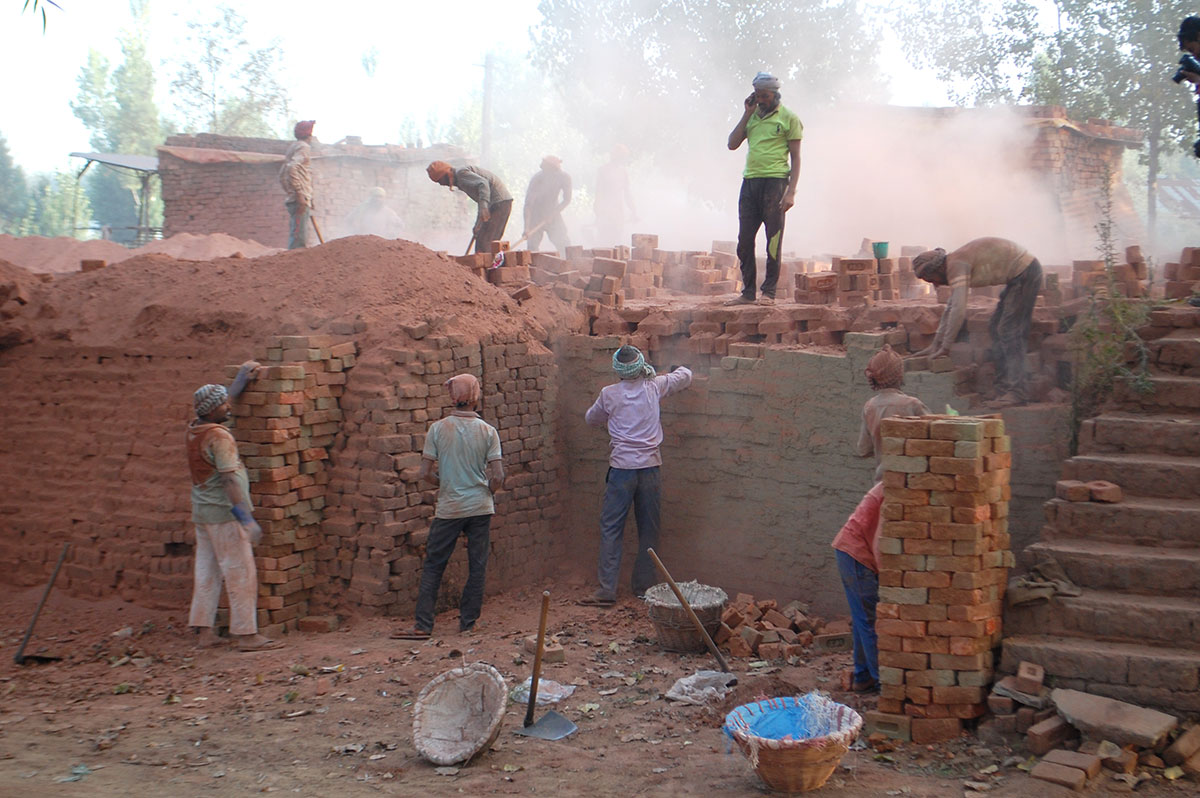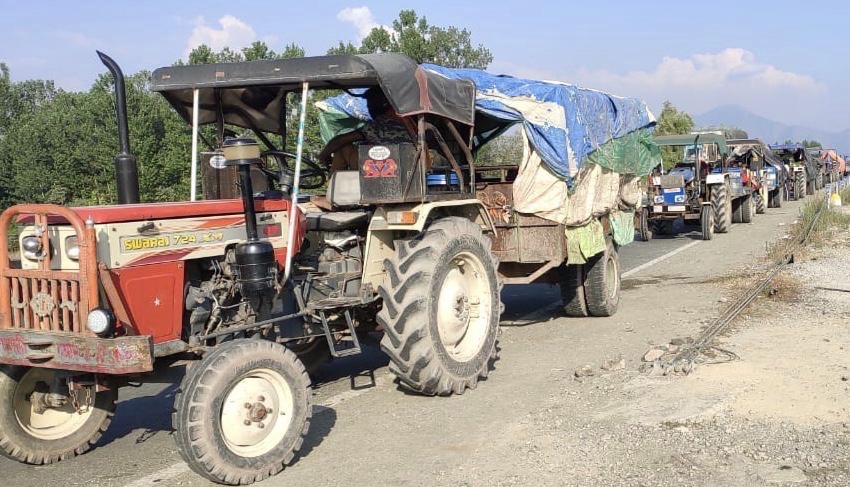by Riyaz Wani
The past week has witnessed thousands of migrant workers returning to Kashmir to work in the construction sector, especially at brick kilns. And as it has turned out many of these workers have entered Kashmir without Covid-19 tests, so we don’t know how many of them might be carrying the infection. What is more, the workers have been transported into Kashmir in JKSRTC buses.

Belated testing at Lower Munda in Qazigund has revealed that 113 of 14,937 labourers had tested Covid positive up to July 20, said a report in a Delhi newspaper. Right now, around 2,000 labourers are reportedly allowed to travel into J&K on a daily basis.
Though the government has now set up a special sample and testing facility at Lower Munda for the migrant labourers, the issue is why the workers are being let in at a time when Kashmir is struggling with the contagion itself and there is not enough healthcare infrastructure to take care of the rising number of patients.
Also, the questions can be asked about the urgency to bring in migrant workers at a time when the government has re-imposed the lockdown and even cancelled the Amarnath yatra.

True, in May the Brick Manufacturing Owners Association had called on the Divisional Commissioner P K Pole and requested him permission to resume operations. They submitted him the details regarding the transportation of non-local labourers. The Association promised the Divisional Commissioner to observe the Covid-19 precautions “in letter and spirit”. They were given permission to start work if they adhered to Standard Operating Procedure.
But two months on, as the Valley is witnessing an exponential rise in the Covid-19 cases, the migrant workers are arriving in droves from Bihar, Uttar Pradesh, and West Bengal. They travel thousands of kilometres before they reach here. In the process, they could be infecting not only one another but on reaching Kashmir also could spread the contagion further among the local population. And this time in the otherwise safer rural areas where the brick kilns are largely located.
The decision to engage in an elaborate exercise of ferrying labourers to Kashmir the Valley has, therefore, no rationale. The government should review the decision in right earnest. In letting the labourers in, it is not only flouting its own re-imposed lockdown but also opening up another front for itself as far as tending to Covid-19 patients goes. This has only further strained its already overstretched healthcare resources.

As for loss to the business of the brick kiln owners, this does not reason enough for bringing labourers at a time when the government routinely issues statement every day about how many “stranded” Kashmiris’ it “rescued” and brought back home. It is true there are around 300 brick kilns in central Kashmir who need labourers to function and in their absence not only will production of bricks decline but in turn, the construction activity will also come to a stop. But this is a reality that is not confined to brick kilns alone. Entire swathes of the Valley’s economy have stopped functioning ever since the annulment of Article 370 in August 2019t. And in February and March when they were in the process of reopening, the Covid-19 lockdown shut everything down again.
According to an estimate by Kashmir Chamber of Commerce and Industry (KCCI), the Valley’s economy suffered a loss of more than Rs 18000 crore during post Article 370 lockdown. Similarly, according to Kashmir Trade Alliance, the Valley has lost Rs 8416.2 crore over the first two months of the Covid-19 lockdown. Cumulatively the loss can be safely put at close to Rs 60000 crore.
Other sectors too have been hit hard. Tourism, one of the key sectors of the local economy has come to a standstill. This has hit the hotel industry and travel operators. The handicrafts sector has been crushed. The fledgeling IT industry and the start-ups are only now trying to resume their operations. Horticulture, a Rs 6500 crore industry and the mainstay of Kashmir economy, that employs more than three million people, has struggled to find takers for its produce. A significant portion of fruit had rotted on trees and the rest was kept at Controlled Atmosphere Storages and finally, there were no buyers.
Similarly, education has been the worst affected. The children haven’t gone to school for a year now. Within a fortnight of their return to schools from February 26, the lockdown over Coronavirus scare once again shut the schools down. The children can’t even study online as the government has refused to restore high-speed mobile internet.
At the same time, continuing lockdown is killing the economy, leaving thousands of people unemployed. It has stopped the circulation of money and hit the marginalized sections very hard. The fallout of the lockdown will thus be worse than that of the Covid-19 and on a much bigger scale.
When the government is not worried for the larger economy comprising a multitude of sectors, its undue concern for the brick kilns is surprising. By the way, who is constructing what? Everybody is trying to save lives. People willing to have some constructions are facing raw material issues. So why is an urgency for bricks? Or is there is some major project coming up which requires a lot of bricks?














